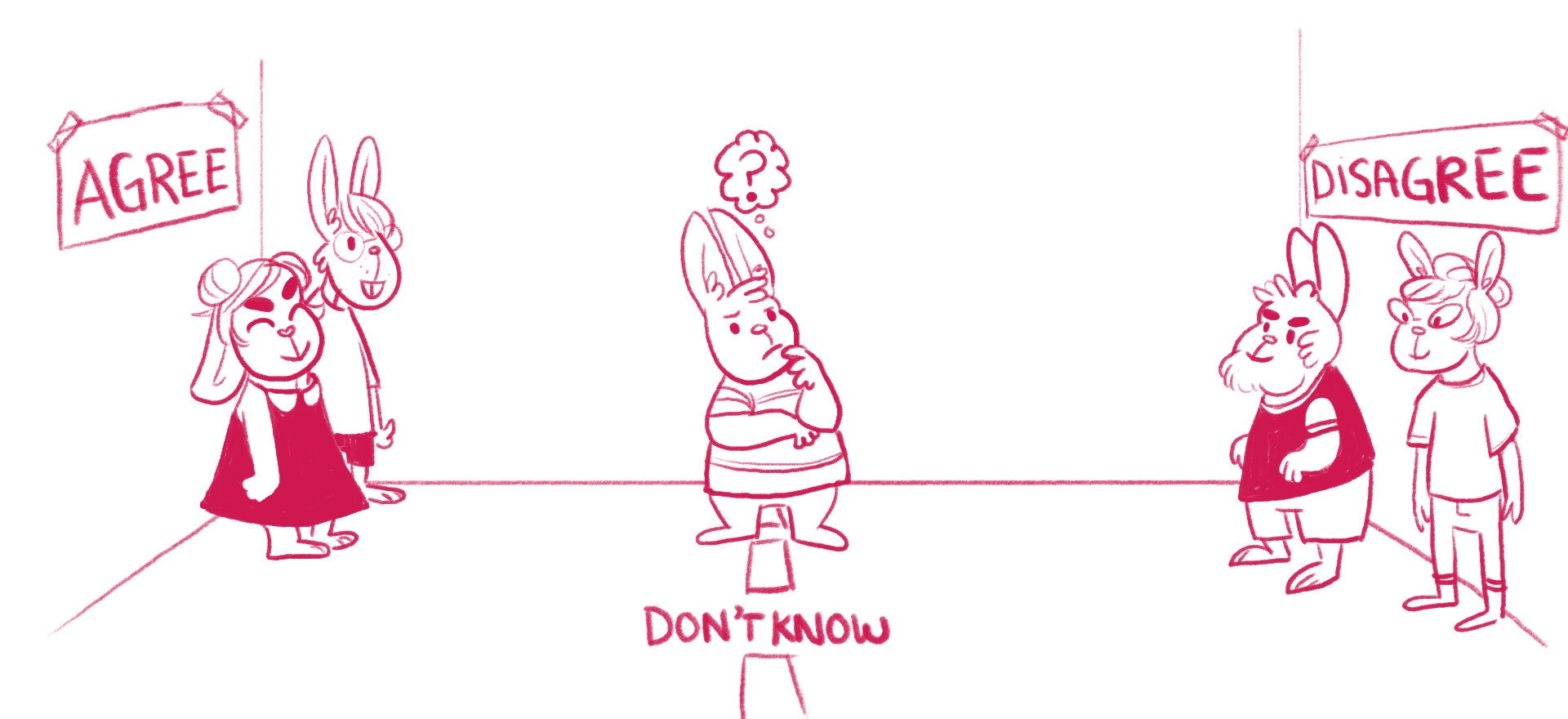Human Spectrogram explore
Tools
- Trello
- Video conferencing app
- Screensharing app
Why do it:
This is an icebreaker activity that helps everyone to see where they stand on any particular topic.
When to do it:
This activity is ideal to do when lots of people have different opinions on a given topic. The activity will help you to find a shared vocabulary and identify future conversation topics.
Who’s involved:
Anyone who should be collaborating with each other.
Time estimate:
Small (1 - 2 hours)
One way to do it:
-
Explain that the Trello board is a fluid, interactive space. It’s like a thermometer or spectrogram. Say that you will be making some intentionally controversial statements. On one column is where people should put their name if they strongly agree and the other is if they strongly disagree. If they are feeling middle ground, place your name in the middle of the board. This entire activity will be done in Trello, while participants join in on either a call (via a tool such as Google Hangouts or Appear.in) or a text based channel (via a tool such as Slack or IRC).
-
Say an intentionally controversial statement. Here are 3 prepared statements. You might only get through one - and that’s totally fine. The goal is to get people to loosen up and start to feel comfortable.
- New York has the best pizza.
- Horror is the best movie genre.
- Dogs are better than cats.
- Bigfoot and Yetis are the same thing.
- The Ewoks are the best part of the Star Wars franchise.
-
Participants should move to the part of the board to express where they stand.

-
At this point participants should be spread out over the Trello board. Ask a participant who is on one of the strongly agree/disagree sides and ask them to say why they are placed where they are. After they finish, ask who disagrees with them (on the other side of the board) and have that person explain why. When people talk you might expect some movement or change of a participant’s place in the document. Note that movement and ask people what prompted them to move.
-
Rinse and repeat. Here’s an illustration of how this would work if you were doing this activity in the same location.
